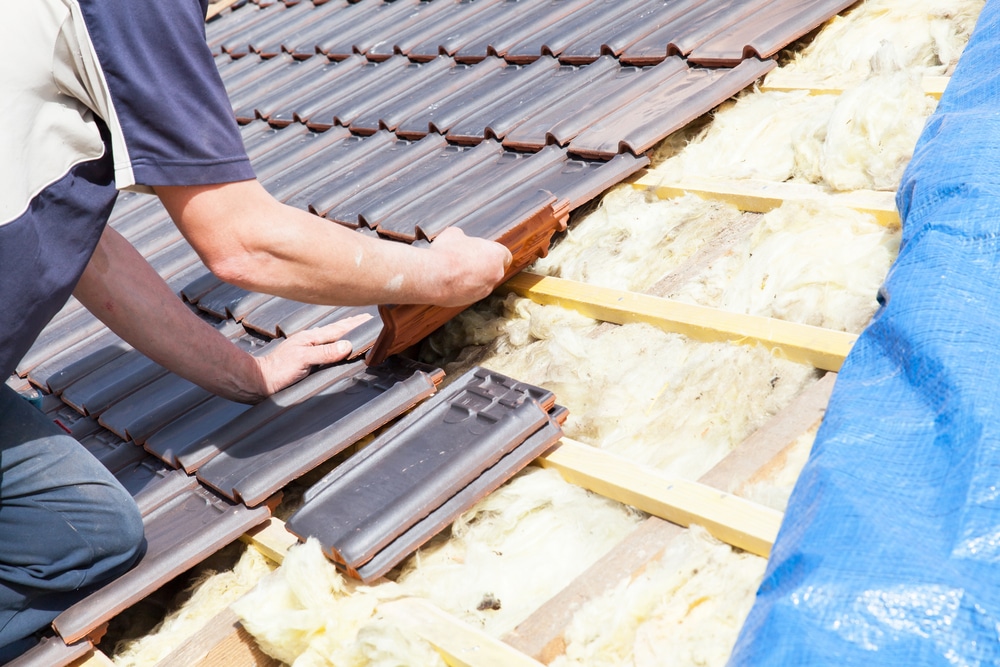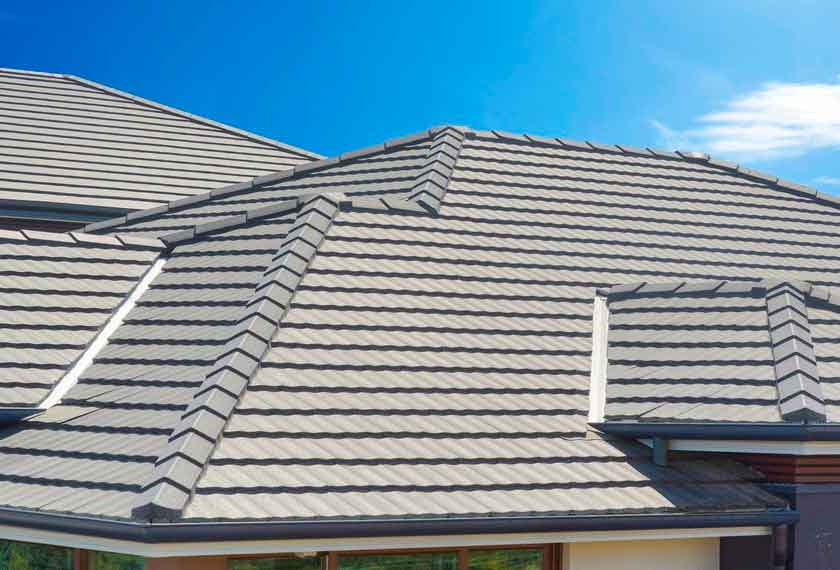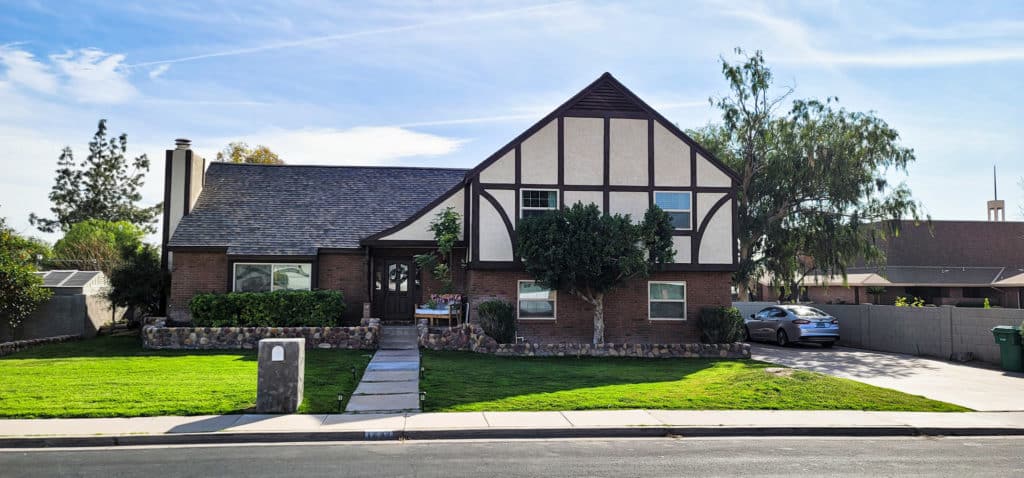The impact of shade on Mesa roof temperature and energy efficiency is an important consideration for many homeowners. Shade has a significant effect on the amount of heat that accumulates in one’s home, as well as how efficiently they can maintain it. This article will discuss the various effects of providing adequate shade to a Mesa roof, including its ability to reduce temperatures and improve energy efficiency.
Heat absorption by roofs is affected by both direct sunlight exposure and ambient air temperature. A combination of these two factors can cause extreme increases in surface temperature which affects the thermal performance of buildings. By offering some degree of shading, it reduces the amount of solar radiation absorbed into the building envelope and helps to decrease internal temperature levels within homes or other structures.
What Is The Effect Of Shade On Roof Temperature?
Shade is an important element to consider when building a roof or making modifications to increase energy efficiency. It can have both positive and negative effects on the temperature of the roof depending on its placement and design. Shade offers protection from solar radiation, which in turn reduces the amount of heat absorbed by the roof surface, leading to lower temperatures. However, if shade is placed too close to the roof’s surface it may trap heat below it and cause higher temperatures than would otherwise be experienced without any shade at all.
The impact of shade on mesa roof temperature will depend on several factors including type of material used for construction, insulation levels, location relative to other structures such as trees and buildings, size of openings like windows, height of walls and color selection for paint and tiles. For example, darker colors absorb more sunlight while lighter colors reflect light better; thus reducing thermal absorption by the material constituting the mesa roof structure. Generally speaking though, adding some form of shading system over a standard mesa-type flat roofs can lead to significant reductions in peak thermal loads throughout summer months compared with unshaded counterparts.
Shading systems are also beneficial in mitigating overheating risks due to their ability to reduce air velocity across surfaces exposed directly to sun rays. This tends to decrease convective airflow around these hot spots within an enclosed space significantly improving comfort conditions inside during day time hours even during extreme weather events like long periods of sunshine or direct exposure to intense UV radiation from prolonged cloudless days. Thus investing in appropriate shading solutions for mesa roofs not only helps improve energy efficiency but can simultaneously provide much needed relief from uncomfortable living environments caused by excessive heat indoors during summer seasons.

How Does Shade Impact Energy Efficiency?
Shade is an important factor in the energy efficiency of a roof. It can affect the amount of heat and light that reaches the surface, reducing its temperature and making it better insulated from outside elements. This can have implications for how much energy needs to be expended in order to keep the interior comfortable, as well as for overall energy costs for a building or residence.
The impact of shade on roof temperature and energy efficiency has been studied extensively by researchers. One study found that shading reduced rooftop temperatures by up to 10°C (18°F), resulting in significant savings on air conditioning costs due to decreased need for cooling. Additionally, when combined with other measures such as reflective coatings or insulation, these effects can become even more pronounced.
These findings demonstrate that shade plays an essential role in optimizing energy efficiency within buildings. Shade provides protection against overheating while also allowing natural light into interiors, thus creating a healthier living environment at less cost than traditional methods. In many cases, this means lower utility bills and carbon emissions without sacrificing comfort levels or aesthetic appeal – making shade an effective tool for improving sustainability efforts both indoors and out.
Advantages Of Shade For Roofs
Shading is a common strategy for reducing energy costs associated with air conditioning. Shade can also reduce the temperature of mesa roofs, which may be beneficial for improving energy efficiency and saving money on heating bills. This article will explore the advantages of using shade to cool down mesa roofs and increase energy efficiency.
The first advantage of shading is that it provides insulation from the sun’s direct heat. By blocking sunlight, reflective surfaces like white-painted roofs or metal sheeting can help lower roof temperatures by up to 40 degrees Fahrenheit in some cases. Additionally, shades trees planted around buildings provide both cooling shade and wind protection, further enhancing their ability to insulate against outdoor temperatures. In addition to providing thermal insulation, shading can also help protect certain materials and coatings of a roof from UV radiation damage.
Finally, shading mesa roofs reduces the amount of solar gain coming into a building through windows and skylights during hot summer months when these features are typically used more often than usual. This helps reduce cooling expenses as less electricity is required to keep rooms at comfortable temperatures. Furthermore, insulated window coverings such as blinds or drapes may be installed over windows facing southward to block additional solar gain if necessary.
In sum, shading mesa roofs has many potential benefits including thermal insulation from direct sunlight; protection of roof materials from UV exposure; and decreased levels of solar gain entering interior spaces via windows and skylights – all helping save on annual energy costs while maintaining comfortable indoor climates year round.
Challenges Of Establishing Shade For Roofs
Shade is one of the most important elements to consider when looking at how to maximize energy efficiency and maintain cooler temperatures on mesa roofs. However, there are several challenges that must be addressed in order for shade to effectively reduce roof temperature and improve energy efficiency. This article will discuss some of these obstacles and provide insight into what needs to happen for optimal results.
The first major challenge of establishing shade for roofs involves finding a way to cover them without obstructing sunlight from entering windows or blocking air flow around the house. Solutions may include using trees or shrubs, installing canopies or awnings, or building an overhead structure. In addition, it is important to ensure proper installation so as not to damage components such as shingles or other materials used in construction. It is also necessary to take into account the climate conditions of the area and make sure the chosen form of shading is suitable for those conditions.
Another obstacle in creating effective shade over mesa roofs is addressing potential impacts on aesthetics due to implementation measures such as large tree plantings near buildings or umbrellas or tents covering a large portion of the roof surface. Therefore, careful consideration should be taken when selecting methods that allow for maximum cooling with minimal visual disruption. Additionally, any type of sun protection system should follow local regulations, including rules pertaining to height restrictions, color schemes, and other design parameters established by city governments.
How To Maximize Shade For Roofs
Maximizing shade for roofs can be a challenging but ultimately rewarding endeavor. The right amount of shading makes it possible to reduce energy costs, decrease roof temperature and improve the overall comfort of indoor living spaces. In order to achieve this goal, there are several steps that need to be taken into consideration.
First off, homeowners should consider the type of materials used on their roof. Certain types of material such as light colored shingles or tiles can reflect more sunlight than darker colors like black asphalt shingles. Darker colors absorb heat from the sun which leads to higher temperatures in the home during hot summer months. Here is a four-point list with easy tips for maximizing shade:
- Utilize trees and shrubs for natural shade – Plant deciduous trees (trees that lose leaves every year) around your house as they provide excellent protection against direct sunlight when their foliage is full during the summertime while allowing warmth through during wintertime when they shed their leaves;
- Install an overhang – An overhang will keep direct sunlight away from windows and doors leading up to your entranceway;
- Use window coverings – Curtains, blinds, shades and other window treatments help block out some of the sun’s rays while still providing privacy;
- Paint the roof white or another pastel color – Painting your roof with lighter colors deflects some of the heat from getting inside your house. This helps reduce air conditioning costs since less energy is required to cool down indoors during hot days.
When it comes down to it, taking advantage of all these options can greatly reduce mesa roof temperature and make homes significantly more energy efficient throughout the year. By understanding why shade matters and how best to maximize its potential benefits, anyone who owns a home can take control of their own environment in an effortless yet effective way for years to come.
Insulating A Roof To Reduce Temperature
The impact of shade on a roof’s temperature and energy efficiency can be maximized when proper insulation is used. Insulating a roof helps reduce the heat that gets transferred from outside to inside, as well as prevent hot air from escaping out. This implies that properly insulating a roof helps keep temperatures lower during both summer and winter months.
With regards to energy efficiency, an insulated roof allows for better control over indoor temperatures with less reliance on cooling or heating systems. By providing necessary isolation to the structure, it also prevents energy loss caused by thermal bridging which would otherwise occur through conductive materials like metal or wood elements. In addition, insulating materials are capable of reflecting sunlight and reducing absorbed radiant heat from other sources such as concrete roofs – yet another factor contributing to reduced temperatures indoors.
By using appropriate insulation in combination with regional climate conditions, homeowners can benefit from improved comfort levels while saving money due to decreased utility bills. Furthermore, this approach offers additional benefits related to environmental protection since it reduces emissions associated with operation of HVAC systems since they run less frequently than without insulation. All these aspects make proper insulation an important aspect of maximizing shade for roofs in terms of their temperature and energy efficiency impacts.
Choosing The Right Roofing Material
When looking to reduce the temperature of a mesa roof, one important factor is choosing the right roofing material. Ideally, it should be light in color and highly reflective so as to reflect much of the sun’s rays away from the home. The material should also have good thermal insulation properties so that less heat will transfer into the interior during hot summer days.
To understand how different materials can impact efficiency, it is helpful to consider their solar reflectance values (SRV). SRV is a measure of how well a surface reflects solar radiation and ranges from 0-1; with lower numbers indicating poor performance, while higher values indicate better performance. For example, lighter colored roofs such as white or cream can achieve an SRV up to .80 or greater whereas dark colors like brown may only reach .30 or lower. Consequently, when selecting a roofing material for your mesa home make sure to choose something with high SRV values in order to maximize shade and energy efficiency.
Lastly, certain types of green roofs are gaining popularity due to their ability to absorb more sunlight than traditional asphalt shingle roofs and then slowly release this stored heat back out at night. This helps maintain cooler temperatures inside the house over prolonged periods of time rather than just reflecting some of the sun’s energy away as other methods do. Therefore if you want maximum energy savings it could be worth considering installing a green roof on your mesa dwelling.
Cost-Benefit Analysis Of Installing Shade For Roofs
The cost-benefit analysis of installing shade for roofs is a crucial step in determining the potential impact it has on mesa roof temperature and energy efficiency. The benefits of investing in shades can be broken down into two primary categories: financial savings and environmental protection.
Financial Savings: Installing an appropriate amount of shade over your roof provides many short term financial gains such as reduced cooling costs, improved indoor air quality, and protection from UV radiation that causes damage to furniture and other materials indoors. In addition, long term savings are derived from adding more insulation or reflective coatings along with shading to reduce heat gain during summer months.
Environmental Protection: Shades not only provide cost saving advantages but also offer numerous environmental benefits such as reducing greenhouse gas emissions by reducing demand for electricity generated from fossil fuels, decreasing thermal pollution caused by air conditioning units, and lessening water consumption associated with cooling systems. Furthermore, they help preserve the local ecology by providing shelter to wildlife animals while helping create cooler microclimates beneath them which helps conserve natural resources like soil moisture and plant life growth.
Shade installation offers multiple benefits when it comes to mitigating mesa roof temperatures and improving energy efficiency; however, careful consideration should be taken before making an investment decision due to its potentially significant upfront costs. By weighing the pros and cons beforehand using a comprehensive cost benefit analysis approach, homeowners can make informed decisions about whether or not this type of product is worth their time and money.



